In This Article
Welcome to the world of earthships—a type of home that blends modern comfort with time-tested sustainability. Designed to be self-sufficient, earthships use solar energy, natural and repurposed materials, and smart systems to create homes that work in harmony with the Earth. These homes aren’t just structures; they’re an invitation to rethink how we live, consume, and connect with nature. With the world increasingly shifting toward more sustainable solutions, earthships offer a beautiful, functional, and empowering path to a low-impact lifestyle.
What Is an Earthship?
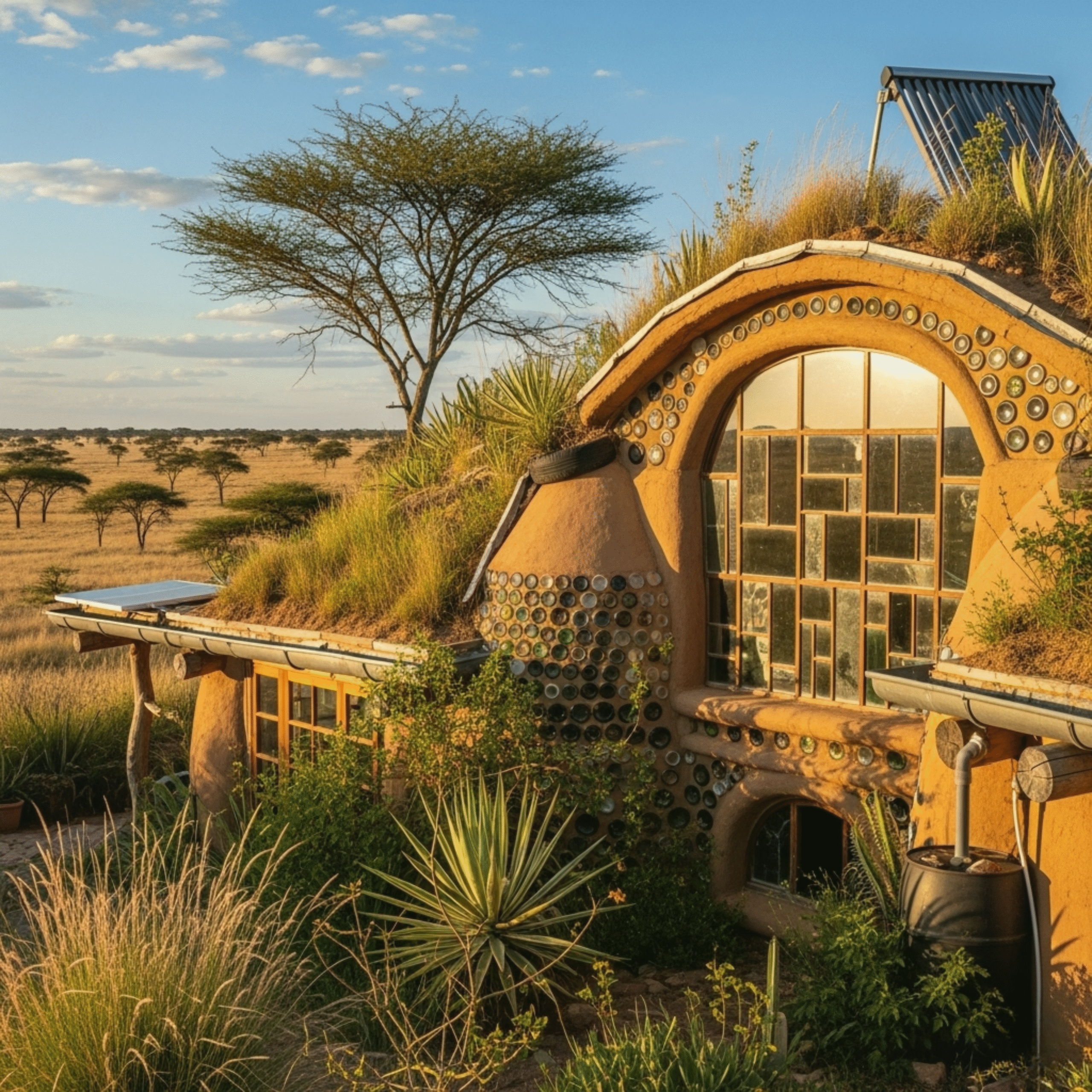
Earthships are off-grid homes built with recycled and repurposed materials like glass bottles, tires, and beer cans. These homes use the Earth’s natural energy sources for heating, cooling, water collection, and even food production. The concept was pioneered in the 1970s by architect Michael Reynolds in Taos, New Mexico. Unlike traditional homes, earthships are designed to operate completely independently from municipal utilities. Every element serves a dual purpose—from thermal mass walls that regulate indoor climate to roofs that harvest rainwater. Earthships reflect a philosophy of building that puts the planet and the homeowner in sync.
The Birthplace of Earthships

Taos, New Mexico, is not just a location—it’s the heartbeat of earthship living. The first earthship was built here, and today, it remains home to the Earthship Visitor Center and a vibrant earthship community. With its extreme temperatures and stunning desert landscape, Taos offered the perfect testing ground for this innovative architecture. The unique climate challenges of New Mexico—cold winters, hot summers, and limited rainfall—have shaped how earthships perform under stress. This region’s commitment to artistic expression, off-grid living, and environmental stewardship made it the ideal cradle for this movement.
Who Is Michael Reynolds?
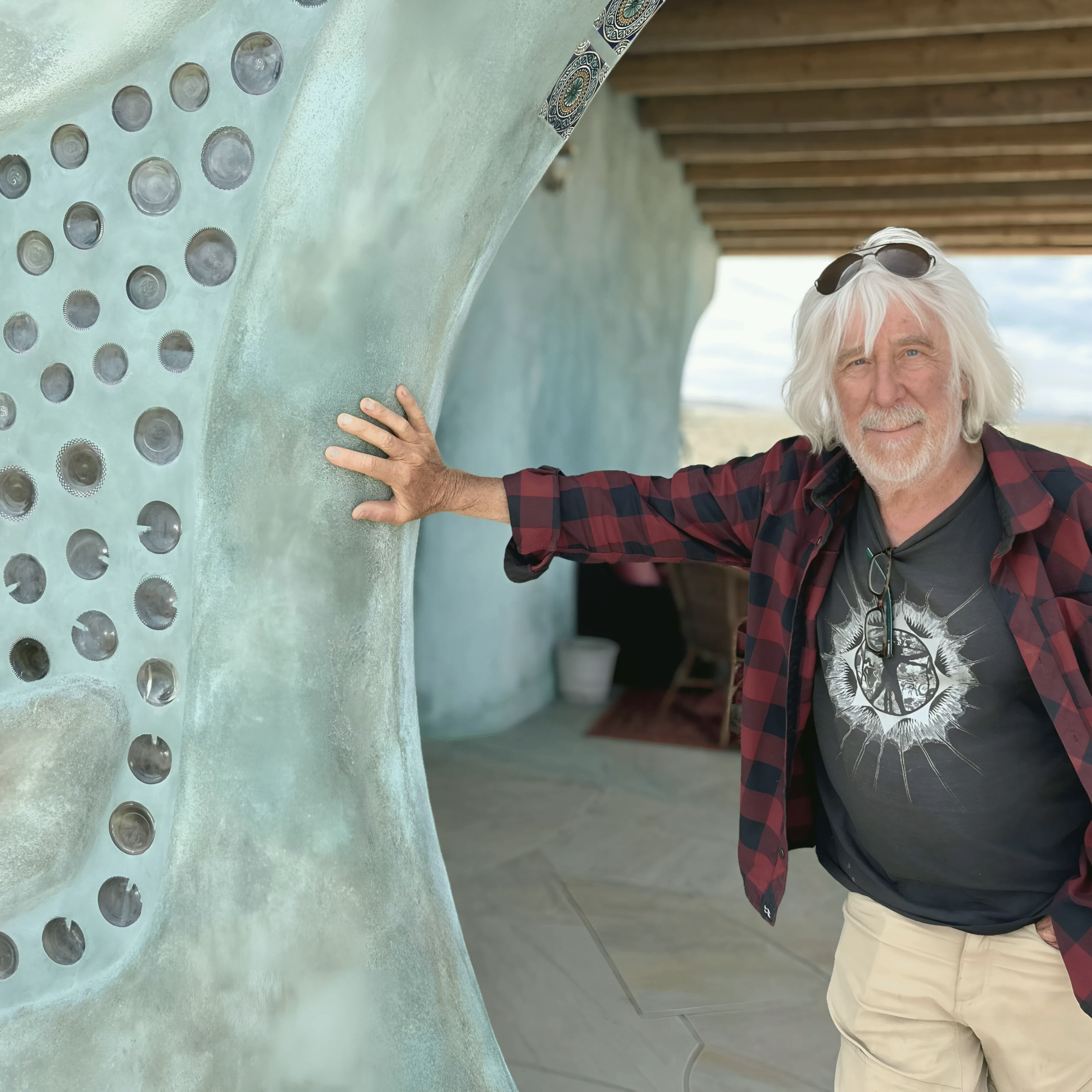
Michael Reynolds, sometimes called the “Garbage Warrior,” is the founder of Earthship Biotecture. His mission? To build homes that are affordable, sustainable, and adaptable to any climate. Earthship Biotecture, his company, continues to lead global efforts to build and educate through hands-on experience and design innovation. Reynolds has spent decades challenging building codes and conventional architecture to prove that homes can be both beautiful and eco-friendly. His work has inspired people worldwide to build homes that reflect personal responsibility and global consciousness.
Also Read: Sustainable Living in 2025: Practical Tips for a Greener Lifestyle
Six Basic Design Principles
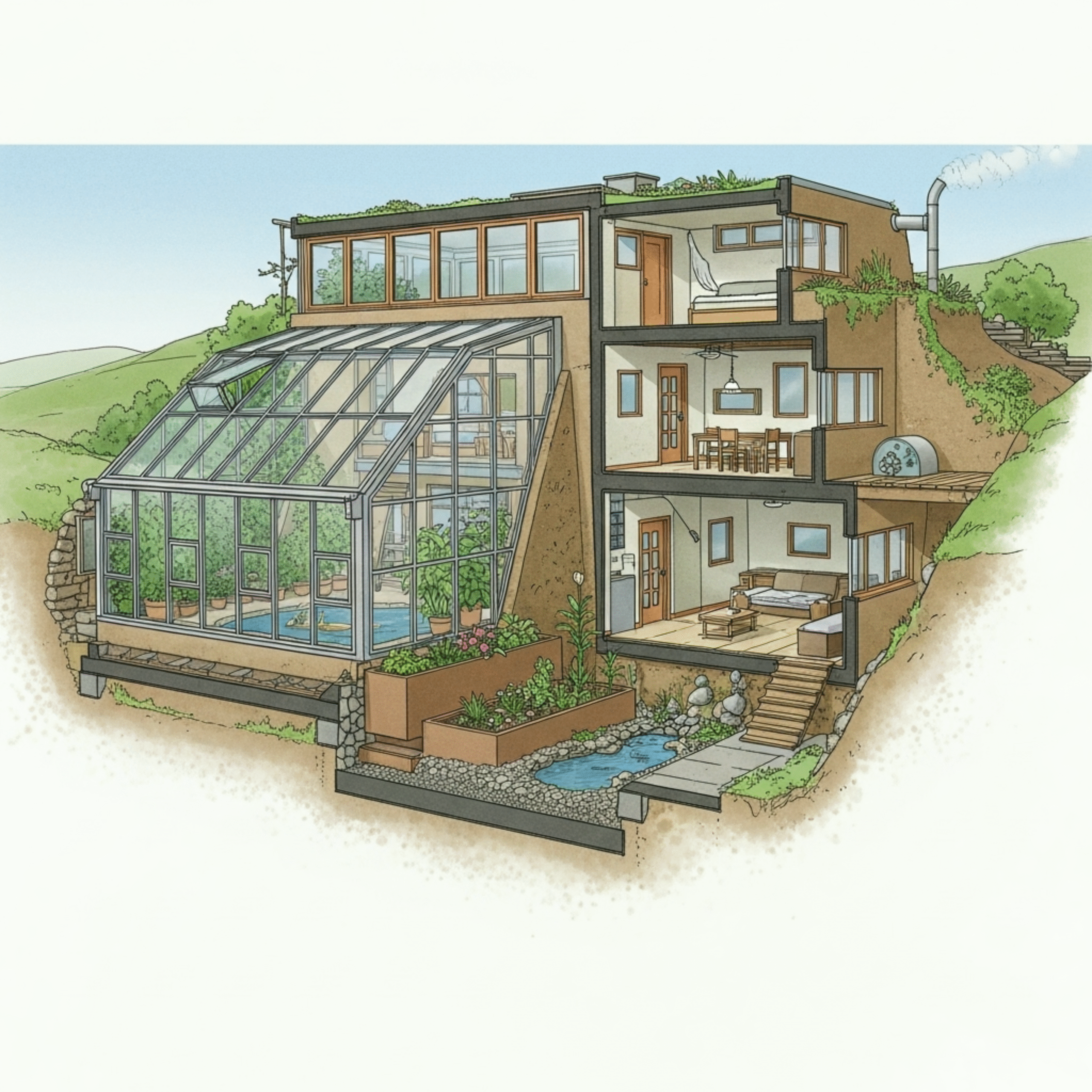
Earthships follow six basic design principles:
- Thermal/Solar Heating and Cooling
- Solar and Wind Electricity
- Water Harvesting
- Contained Sewage Treatment
- Food Production
- Use of Natural and Repurposed Materials These principles work together to create a house that can stand alone, independent of outside utilities and systems. Each design principle complements the others, creating a holistic approach to sustainable living. For instance, the collected water supports both plumbing and indoor food systems, while solar power fuels energy-efficient appliances.
Built for All Seasons
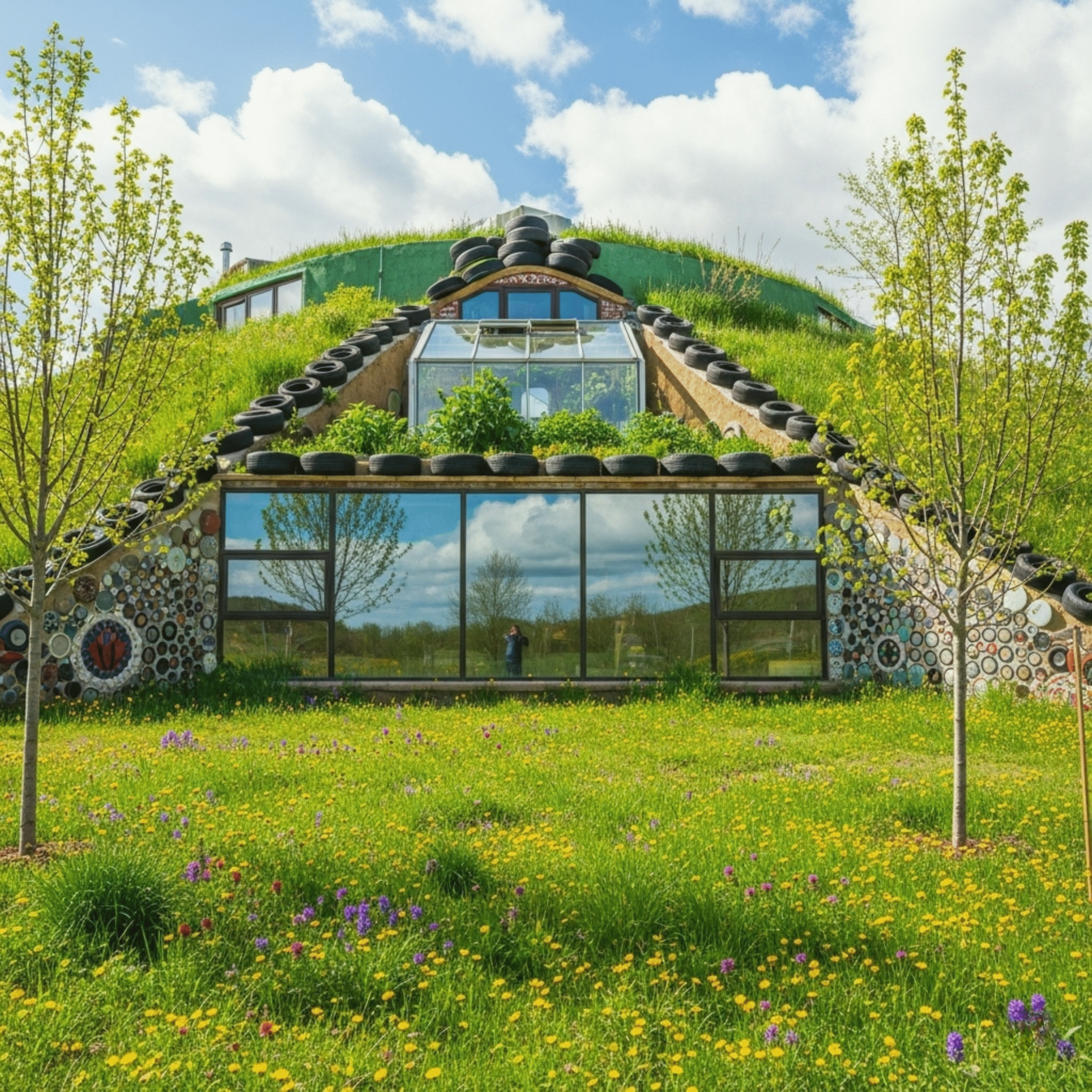
Whether you’re facing winter cold or summer heat, earthships stay comfortable year round. The homes use thermal mass and passive solar heating and cooling to regulate indoor temperature, reducing heat loss during cold months and preventing overheating during summer. Thick walls made from tires and concrete help stabilize internal climate, no matter the outside weather conditions. In regions where temperatures swing from below freezing to scorching hot, this internal stability makes all the difference in creating a cozy, livable home without needing mechanical HVAC systems.
The Magic of Thermal Mass
The thermal mass of earthships comes from the two walls packed with earth-filled tires. These walls store heat and slowly release it, helping regulate temperatures indoors. In winter, the mass holds onto heat from the sun. In summer, it absorbs and reduces heat, maintaining a pleasant living space. This system mimics natural caves, where temperatures remain steady despite external fluctuations. It’s an ancient concept updated with modern sustainability goals.
Solar Power at the Core
Most earthships rely on solar panels to generate electricity. Solar energy powers everything from lights to refrigerators, giving you freedom from traditional utility bills. Some homes also incorporate wind power for additional energy support. By using a battery bank, energy collected during the day is stored for nighttime use, ensuring round-the-clock access to electricity. This clean, renewable energy source drastically reduces environmental impact while promoting self-reliance.
How Water Harvesting Works
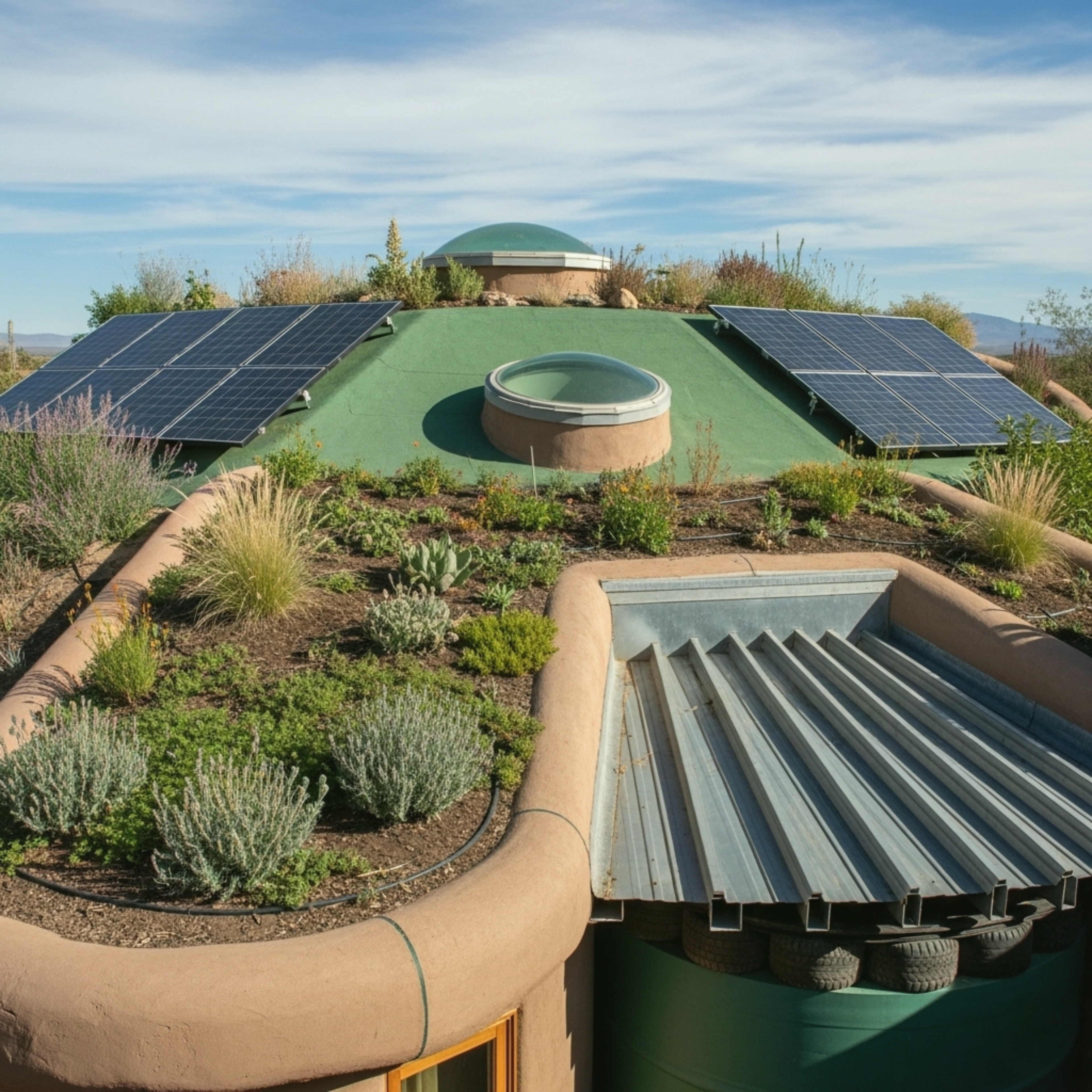
Rain is a valuable resource in an earthship. Roofs collect rainwater and funnel it into a cistern. From there, it’s filtered for use in sinks and showers. Afterward, grey water is directed to indoor planters where it nourishes plants. This recycled water then helps flush toilets, offering an efficient loop of water use. Even in arid climates like New Mexico, earthships make the most out of every drop. Water harvesting is not only practical—it’s empowering, giving homeowners direct control over their water supply.
Contained Sewage Treatment
Earthships use contained sewage treatment systems that handle waste water onsite. Flush toilets direct waste to a biodigester or septic system. The remaining grey water is cleaned through natural filters and reused in gardens, reducing water waste significantly. These systems are both hygienic and sustainable, making earthships viable even in locations with limited infrastructure. The ability to manage waste in an environmentally friendly way is one of the most revolutionary aspects of earthship living.
The Power of Food Production
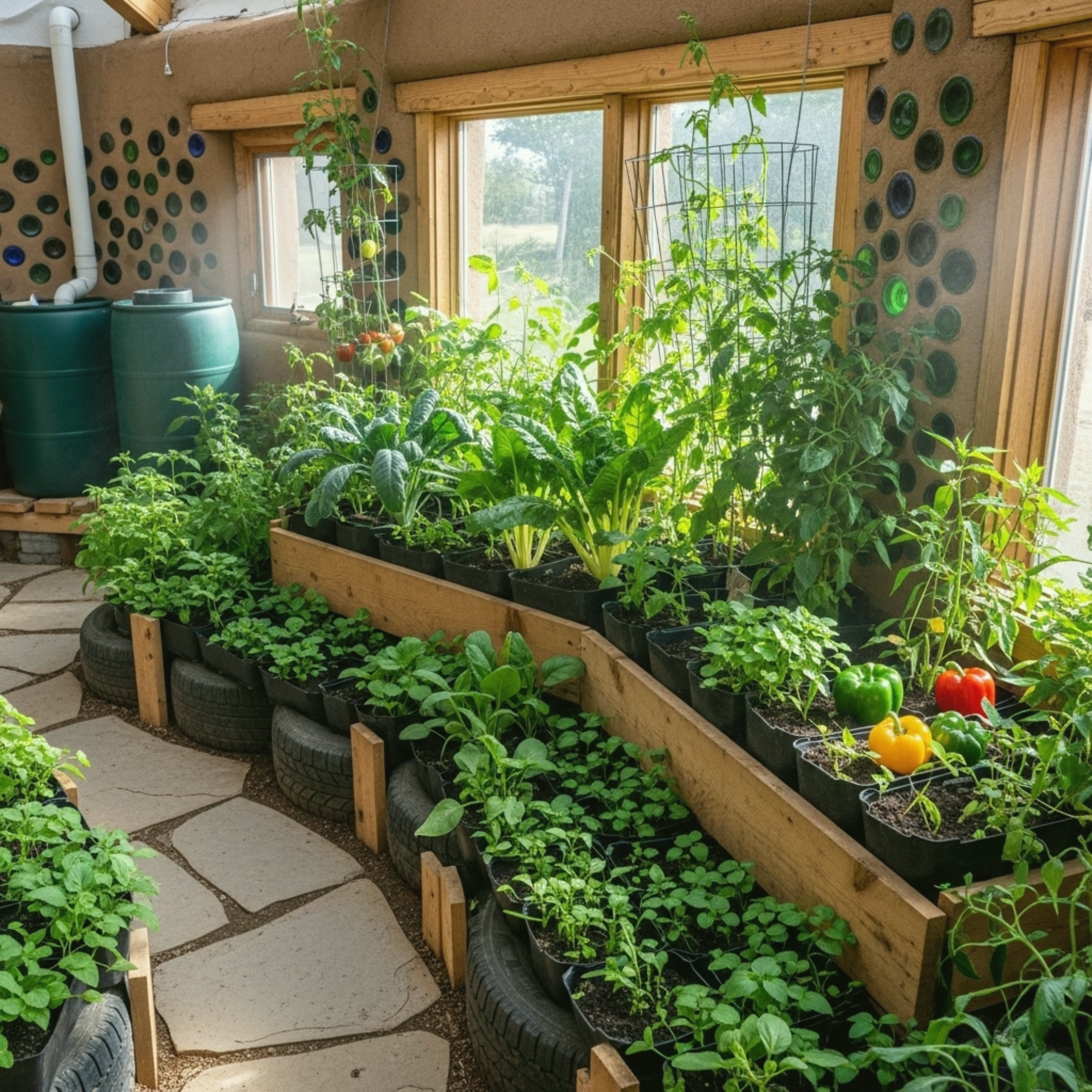
Many earthships include indoor greenhouses or planters where you can grow food year round. From herbs and leafy greens to tomatoes and even bananas, these homes support a level of food production that brings you closer to nature—and your plate. Some earthship owners grow up to 50% of their diet in these indoor gardens. Not only does this reduce grocery bills, but it also ensures you know exactly where your food comes from and how it was grown.
Inside the Earthship Visitor Center
If you’re curious, the Earthship Visitor Center in Taos is a must-see. Open to the public, this center showcases a full earthship model, complete with water harvesting, solar heating, and food production systems. You can tour the space, learn the science behind it, and even stay overnight in a guest earthship. The visitor center acts as both an educational hub and a living example of what’s possible when design meets sustainability. Many visitors leave inspired to build their own earthship or adopt eco-friendly changes in their current home.
Build Your Own Earthship
Yes, you can build your own earthship! Earthship Biotecture offers workshops and detailed guides to help you begin the journey. Whether you want a tiny off-grid retreat or a full-time house, the possibilities are flexible and inspiring. Building your own earthship means making hundreds of choices that reflect your values—from how you collect water to what plants you grow. While construction can be labor-intensive, many people find the process empowering and deeply rewarding.
Community That Cares
The earthship community in Taos and beyond is more than just neighbors—it’s a movement. With shared values around sustainability, food, and reducing waste, these communities often host events, building projects, and workshops to educate others and grow the earthship network. Being part of an earthship community means you’re never alone in your efforts to live sustainably. People share resources, ideas, and support, making the lifestyle feel accessible and enriching.
Real Benefits for Real Lives
Building an earthship isn’t just about architecture—it’s about lifestyle. You reduce reliance on public utilities, lower utility bills, and gain peace of mind knowing your house can sustain itself even in extreme weather conditions. The design also encourages mindfulness about energy use, food waste, and natural resources. Many earthship residents report a greater sense of freedom, purpose, and connection to the Earth. It’s about choosing to live in a way that honors your values and benefits the planet.
A Home Built with Intention
An earthship isn’t built quickly. It takes planning, labor, and love. Yet every piece, from glass bottles to solar panels, reflects intentional living. The result is a beautiful, functional house that respects the Earth and supports your well-being. Each home is a personal expression of its builder, using color, texture, and shape to create living spaces that are both artistic and practical. There’s something deeply satisfying about knowing your home is a reflection of conscious choices.
Living with Natural Light
Large south-facing windows are a key part of earthship design. They not only bring in natural light but also help with solar heating. Sunlight fills the greenhouse, warms the thermal mass, and supports indoor plant life. Living with more natural light improves mood, reduces electricity use, and creates a strong connection between indoor and outdoor spaces. It’s a reminder of the simple joys of daylight and nature.
Cooling Made Easy
With ventilation tubes from the north wall and operable skylights in the roof, earthships create natural air flow. This passive cooling system eliminates the need for air conditioning, even in hot summer climates. The system mimics how cool air sinks and hot air rises, allowing fresh air to circulate without electricity. It’s an elegant solution that makes the most of physics and natural airflow.
Built from the Ground Up
Whether it’s repurposed materials like beer cans or recycled tires, every element of an earthship has a purpose. Even the walls and roofs are designed to function with nature, not against it. This thoughtful approach to construction not only reduces waste but also fosters a sense of creativity. You’re not just building a house—you’re building a philosophy of life grounded in sustainability.
What It Feels Like to Live in One
Living in an earthship is peaceful. There’s a quiet confidence in knowing your home can handle heat, cold, wind, and rain. From the smell of plants in the greenhouse to the light filtering through colorful glass bottles, it feels like living in a work of art shaped by the Earth. Many residents describe it as a grounding, healing experience. The house becomes more than shelter—it becomes a partner in your daily life.
Ready for the Future
As more people look to sustainable living, earthships are becoming a popular option. With climate change, rising utility bills, and growing interest in off-grid homes, the future of housing may be rooted in the past—in the earth beneath our feet. Earthships are adaptable, scalable, and suited to a wide range of climates and communities. They’re not just a trend—they’re a practical response to global challenges.
Final Thoughts
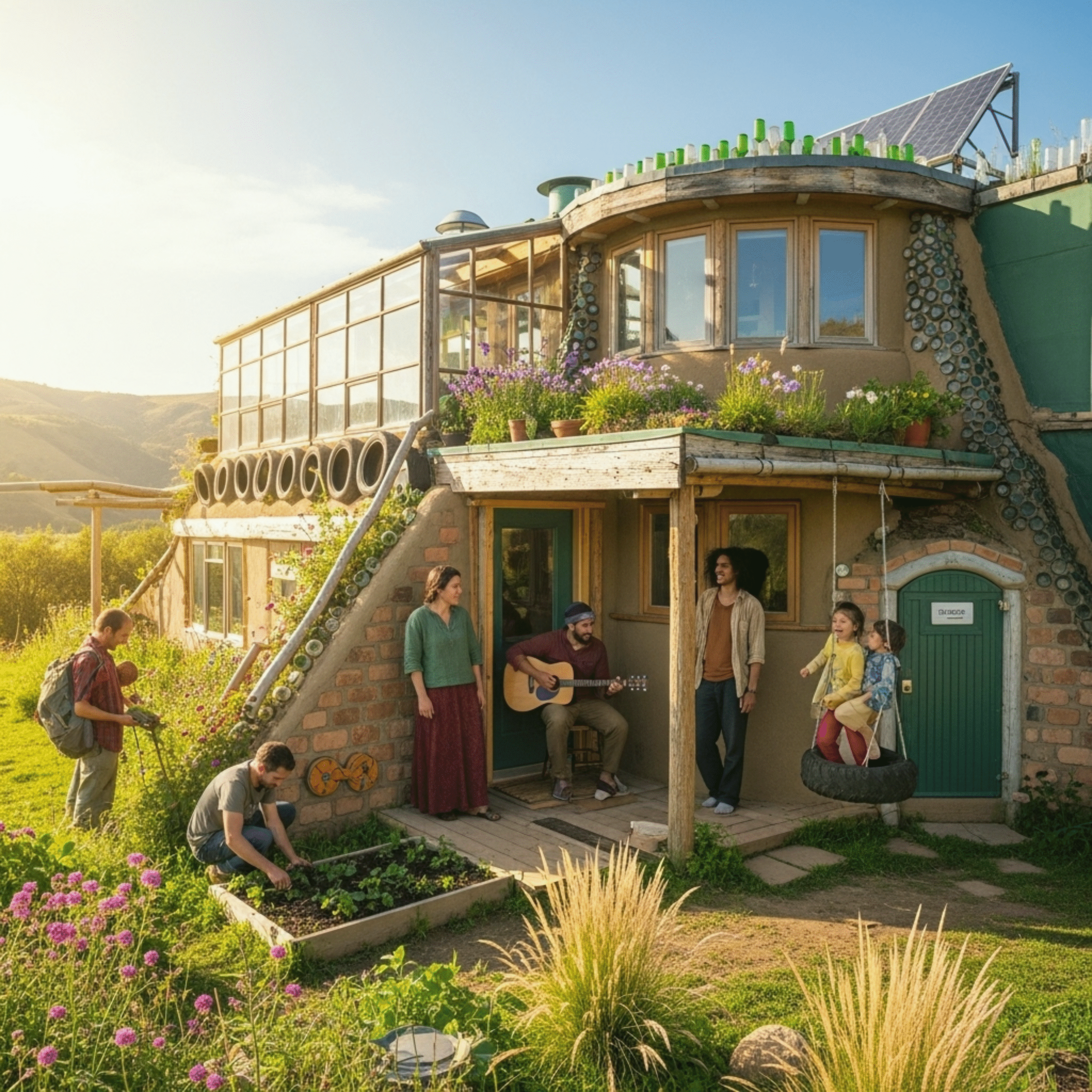
Earthships prove that you don’t have to sacrifice comfort to live sustainably. With the right design principles and a little inspiration from pioneers like Mike Reynolds, we can build homes that care for us while caring for the planet. Whether you’re curious, ready to build, or just want to visit, earthships offer a world of possibility grounded in natural living. They invite us to live more mindfully, love more deeply, and build with greater intention for a better tomorrow.

 Reviewed by Author:
Reviewed by Author:


















